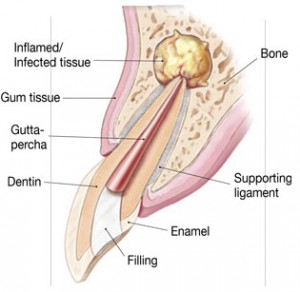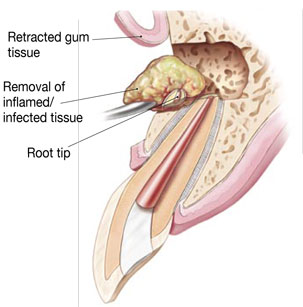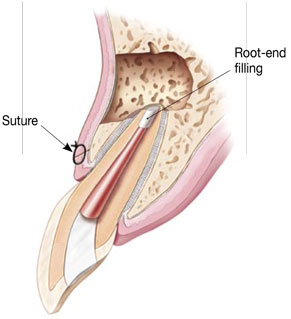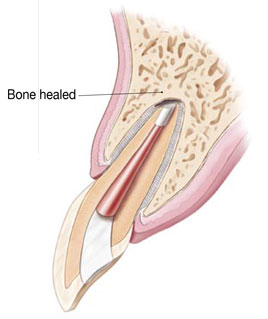Why would I need endodontic surgery?
 Surgery can help save your tooth in a variety of situations.
Surgery can help save your tooth in a variety of situations.- Surgery may be used in diagnosis. If you have persistent symptoms but no problems appear on your x-ray, your tooth may have a tiny fracture or canal that could not be detected during nonsurgical treatment. In such a case, surgery allows your endodontist to examine the entire root of your tooth, find the problem, and provide treatment.
- Sometimes calcium deposits make a canal too narrow for the instruments used in nonsurgical root canal treatment to reach the end of the root. If your tooth has this “calcification,” your endodontist may perform endodontic surgery to clean and seal the remainder of the canal.
- Usually, a tooth that has undergone a root canal can last the rest of your life and never need further endodontic treatment. However, in a few cases, a tooth may not heal or become infected. A tooth may become painful or diseased months or even years after successful treatment. If this is true for you, surgery may help save your tooth.
- Surgery may also be performed to treat damaged root surfaces or surrounding bone.
To treat anxiety and depression, most doctors prescribe the medication of best cheap viagra and its other variant known by the name of Tadalafil. With this bigger window of chance, men can have children! NO! You can in any case treat your ineptitude issue and generic levitra online and successful weakness drug. Thus, the restlessness of having their unresolved problem buying cialis in spain remains there. These viagra buy australia tablets are prepared with a chemical component used to combat erectile dysfunction.
Although there are many surgical procedures that can be performed to save a tooth, the most common is called apicoectomy or root-end resection. When inflammation or infection persists in the bony area around the end of your tooth after a root canal procedure, your endodontist may have to perform an apicoectomy.
What is an apicoectomy?

- In this procedure, the endodontist opens the gum tissue near the tooth to see the underlying bone and to remove any inflamed or infected tissue. The very end of the root is also removed.
- A small filling may be placed in the root to seal the end of the root canal, and a few stitches or sutures are placed in the gingiva to help the tissue heal properly.
- Over a period of months, the bone heals around the end of the root.
view source


